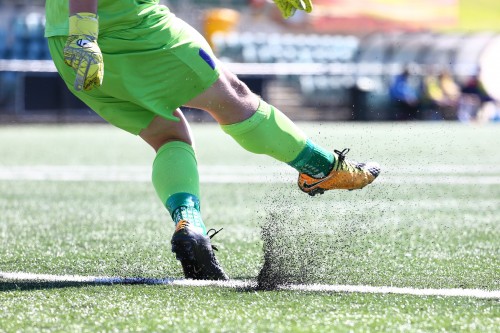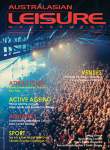Report from USA’s EPA and CDC says recycled rubber used in playing fields does not elevate chemical exposure risk

The USA Environmental Protection Agency (EPA) Office of Research and Development (ORD) and the Centers for Disease Control and Prevention (CDC) and Agency for Toxic Substances and Disease Registry (ATSDR) have completed research on synthetic turf playing fields under the Federal Research Action Plan on Recycled Tire Crumb Used on Playing Fields and Playgrounds (FRAP), releasing the results of Part 2 of the study.
The findings support the conclusion that while chemicals are present recycled crumb rubber used in playing fields and exposures can occur, they likely are limited.
The Part 1 report, released in 2019, summarises the research effort to characterise tire crumb rubber, which includes characterizing the components of and emissions from recycled tire crumb rubber. The recently released exposure characterization report summarizes the potential exposures that could be experienced by users of synthetic turf playing fields with recycled tire crumb rubber infill. It includes the results from a supplemental biomonitoring study conducted by CDC/ATSDR.
The agencies say neither Part 1 nor Part 2 of this study constitutes an assessment of the risks associated with playing on synthetic turf fields with recycled tire crumb rubber infill but that the results of the research described in Part 1 and Part 2 of the final report can be used to inform risk assessments.
According to Part 2 of the study’s findings “generally, only small amounts of most organic chemicals are released from tire crumb rubber into the air through emissions. For many analytes measured during active play at the outdoor fields, next-to-field concentrations in air were not different than background samples while others were somewhat higher.”
The study also found that only small fractions of metals are released from tire crumb rubber into simulated biological fluids compared with a default assumption of 100% bioaccessibility.
In the biomonitoring pilot study conducted as part of the research, concentrations for metals measured in blood were similar to those in the general population, and no differences in polycyclic aromatic hydrocarbon (PAH) metabolites in urine were observed in the supplemental biomonitoring study between study participants using natural grass fields and those on synthetic turf fields with tire crumb rubber infill.
The report also cites three independent studies that demonstrate the safety of synthetic turf fields or system components:
Netherlands National Institute for Health and Environment writes that the “risk to health from playing sports on these synthetic turf fields is virtually negligible.”
European Chemicals Agency found “no reason to advise people against playing sports on synthetic turf containing recycled rubber granules as infill material.”
National Toxicology Program found there “was no evidence of toxicity in mice from ingestion of crumb rubber.”
The report also found that when looking at four specific chemicals - pyrene, benzo[a]pyrene, zinc and lead - players who use synthetic turf fields with crumb rubber have exposure levels "similar to, or somewhat lower" or even "substantially lower" than the public.
These results indicate players are seeing no greater levels of exposure to these chemicals than nonplayers, reaffirming similar studies that have concluded there is no elevated health risk and no reason to advise people against playing sports on synthetic turf containing recycled rubber.
Releasing a statement on the study’s findings, the Washington DC-based Recycled Rubber Coalition (RRC) advised “as anticipated, the Recycled Rubber Coalition is thrilled to see the positive research findings from the USA Federal Government's Synthetic Turf Field Recycled Tire Crumb Rubber Characterization Research Final Report - the largest study ever conducted in the country on this topic.
“This report adds to a growing body of evidence that confirms what we have long known to be true: Crumb rubber infill is safe and crumb rubber turf fields are as safe as natural grass fields. It is of the utmost importance to our industry that playspaces are safe for our loved ones, and that is why we have supported this research from the outset.”
Melanie Taylor, President and Chief Executive of the USA’s Synthetic Turf Council added "synthetic turf systems unlock thousands of hours of additional play across America, save millions of gallons of water annually and provide a more consistent playing surface. Our industry has long been and remains committed to safety and creating sustainable play spaces, and we are pleased to see that the largest study ever conducted on crumb rubber infill in the country demonstrates there is no elevated health exposure for playing on synthetic turf systems."
European Commission restrictions on microplastics
As part of move to restrict the use of microplastics, the European Commission last year introduced a measure that, following an eight-year transition period, will halt the use of rubber particles in artificial turf sports fields.
At the time, the European Chemicals Agency's Risk Assessment Committee advised that "infill material for use in synthetic turf sports surfaces is the largest contributor in terms of microplastic use in products, as well as the largest source of environmental emissions".
Click here to view details of the FRAP report.
Related Articles
23rd March 2024 - IAKS launches report on key trends for outdoor sports surfaces
17th March 2024 - NSW Government looks for community feedback on new sport field synthetic turf guidelines
23rd January 2024 - AFL releases new guidelines on community sport facilities
8th December 2023 - Australia’s first Synthetic Turf Recycling Hub on track for April 2024 opening
7th October 2023 - European Commission confirms restrictions on uses of microplastics
23rd June 2023 - NSW Chief Scientist calls for more research into synthetic sports fields
25th May 2023 - European Commission to restrict use of rubber infill in synthetic sport pitches
2nd April 2023 - UK’s Royal Horticultural Society and Landscape Institute combine to advocate against fake grass
19th October 2022 - Consultancies combine to present Synthetic Sports Surfaces Seminars
9th September 2022 - European Commission move to restrict microplastic use set to impact infill used in synthetic turf systems
25th March 2022 - New study claims flaws in processes used to justify artificial turf sports fields
22nd October 2021 - NSW Government releases report on use of synthetic turf in community sport
15th April 2021 - NSW Planning Minister to investigate alternatives to synthetic grass
11th February 2021 - City of Sydney invests in five synthetic sports fields for extended hour usage
9th December 2016 - ASTM International standard for artificial turf infill
4th March 2015 - Sport surface consultant backs European Safety Standard for infill
30th March 2014 - Study finds no difference in player injury rates on artificial turf surfaces
24th January 2012 - FieldTurf responds on rubber infill safety
5th May 2010 - First Installations for Organic Synthetic Turf Infill






